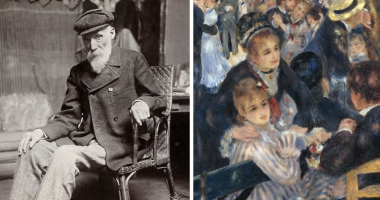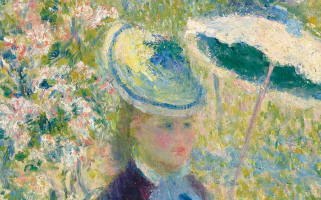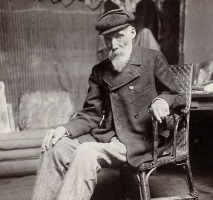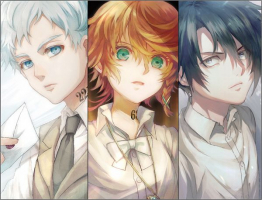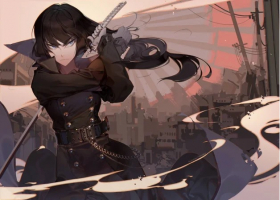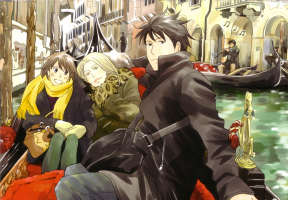Top 7 Best Portraits By Pierre-Auguste Renoir
Pierre-Auguste Renoir (February 25, 1841 – December 3, 1919) was the only Impressionist to achieve prominence as a portrait painter. Throughout his more than ... read more...50-year career, he studied the genre of portraiture. In the late 1860s, Renoir was one of the pioneers of the art movement Impressionism. He painted several Impressionist-style portraits, including La Loge and A Girl with a Watering Can. At the 1879 Salon, his portrait Madame Georges Charpentier and her Children was a smashing success. It was a watershed moment in his career, resulting in further commissions and financial stability. Renoir's style evolved following his trip to Italy in 1881-82. He abandoned Impressionism in favor of a more formal and controlled approach to portraiture. This shift in style is visible in his 1883 painting By the Seashore. Learn more about Renoir, the portrait artist, by viewing his seven best portrait paintings.
-
Henriette Henriot, a performer on the Odéon stage, served as the subject for this photograph. The picture also referred to as the Blue Lady because of the startling blue color of the clothing, debuted in 1874 among six other Renoir pieces at the first Impressionist show.
Critics called it a flop, with one likening the model's shoe to a small black mouse. But today, it is regarded as one of Pierre-Auguste Renoir's most celebrated works. La Parisienne has been a part of the collection of the National Museum of Wales since 1952, and it is one of the most recognizable and well-liked displays there.
Year: 1874
English Title: The Parisian
Location: National Museum Cardiff, Wales
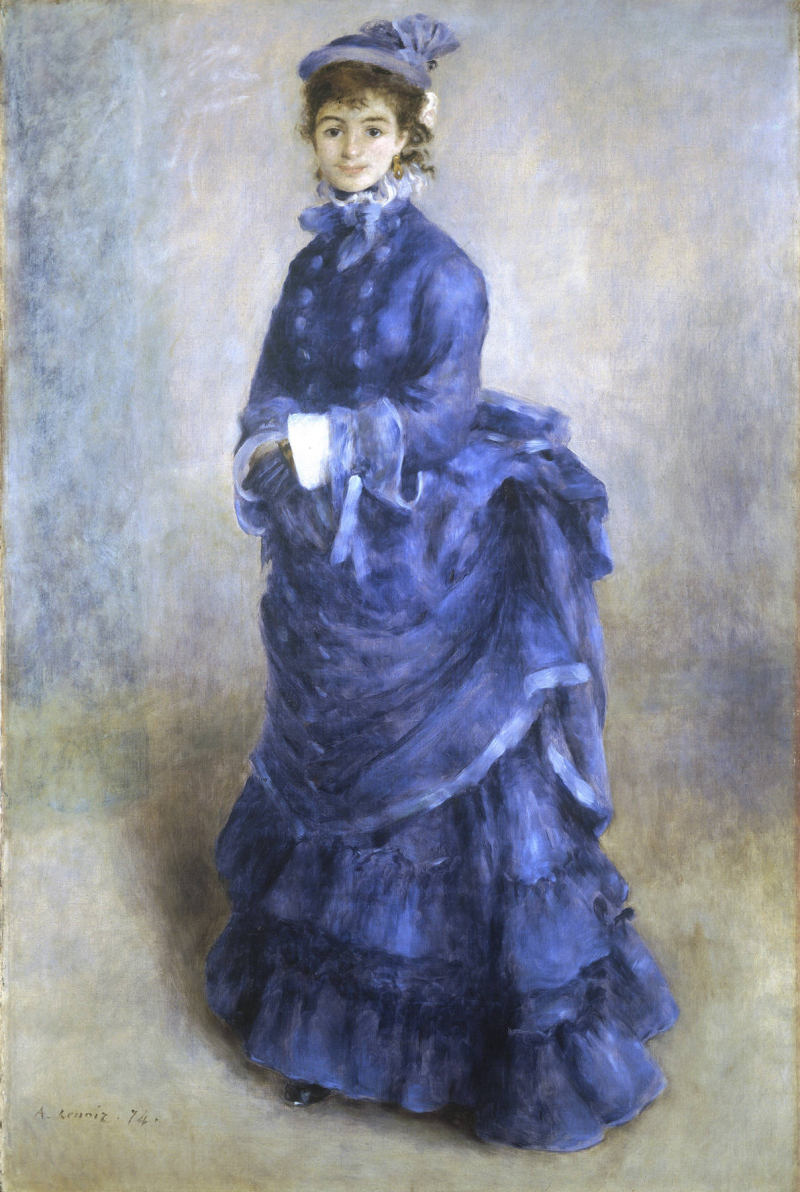
Wikipedia 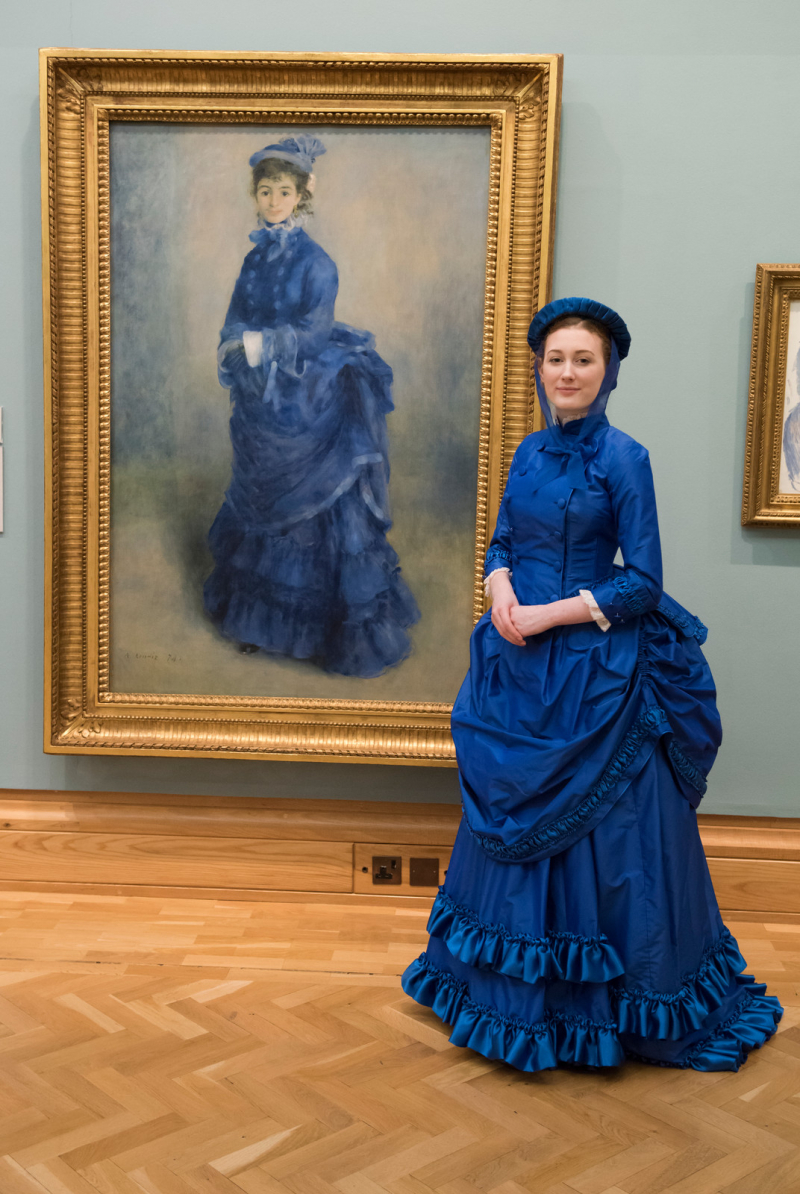
Wix.com -
This painting was the principal exhibit of Pierre-Auguste Renoir at the first Impressionist exhibition in April 1874. It shows a trendy couple sitting in the greatest seats in the house. Renoir, like many other Impressionists, employs theater to represent the shifting dynamics of fashionable Parisian society, but he also adds intrigue through his tale.
The nicely dressed woman has lowered her opera glasses, perhaps to unveil herself to theatergoers, while her partner raises his binoculars, probably to get a better look at a lovely woman.
La Loge is considered one of the first Impressionist masterpieces.
Year: 1874
English Title: The Theater Box
Location: The Courtauld Gallery, London
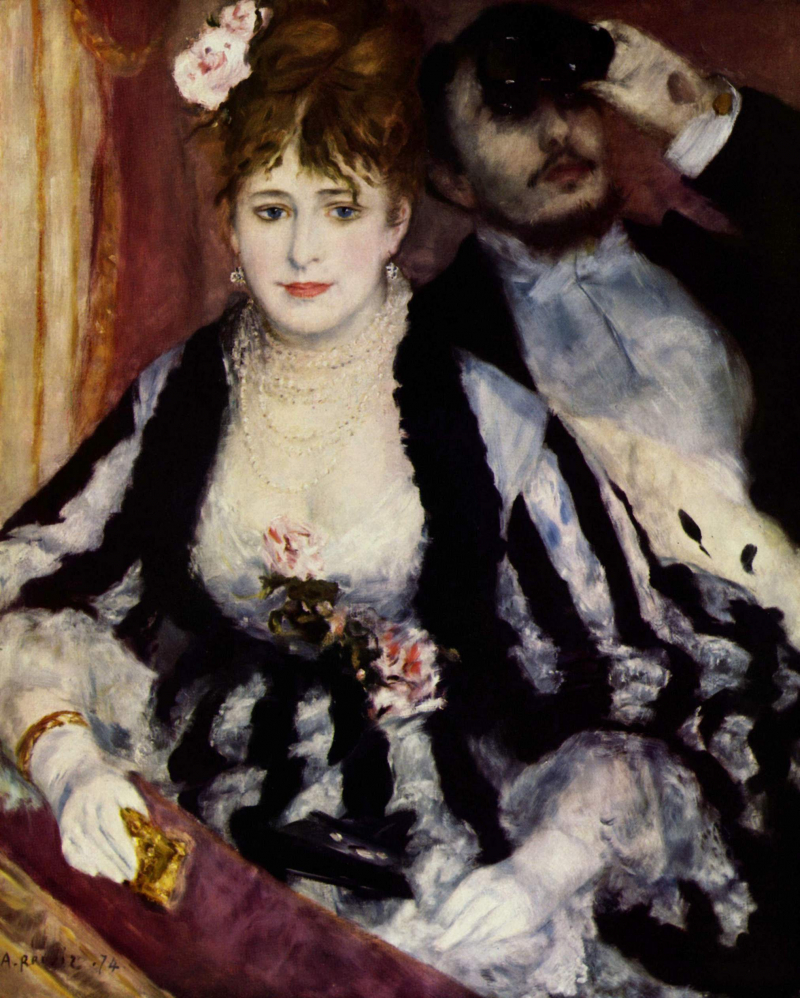
Wikipedia 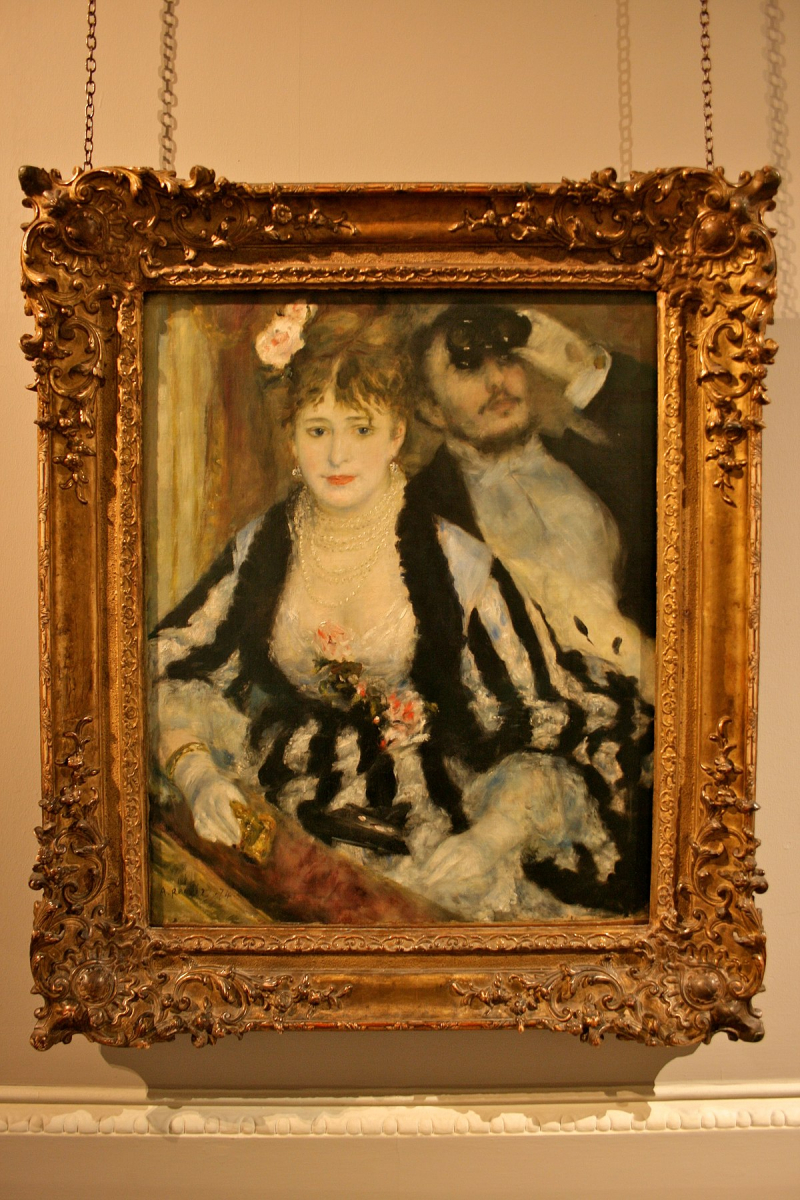
Wikimedia Commons -
Though it is not clear, A Girl with a Watering Can is thought to have been produced in Claude Monet's famed garden at Argenteuil. The girl's identity is likewise unknown. She could be one of the girls from Renoir's neighborhood.
The portrait is done in a mature impressionist style. The colors utilized represent the brilliance of the Impressionist palette, and the brushstrokes are applied delicately. In addition, in keeping with Impressionist tradition, the work was painted en plein-air ("open-air"), which is the practice of painting outside to capture the effects of light and the environment.
Year: 1876
French Title: La Petite Fille à L’arrosoir
Location: National Gallery of Art, Washington, D.C., USA
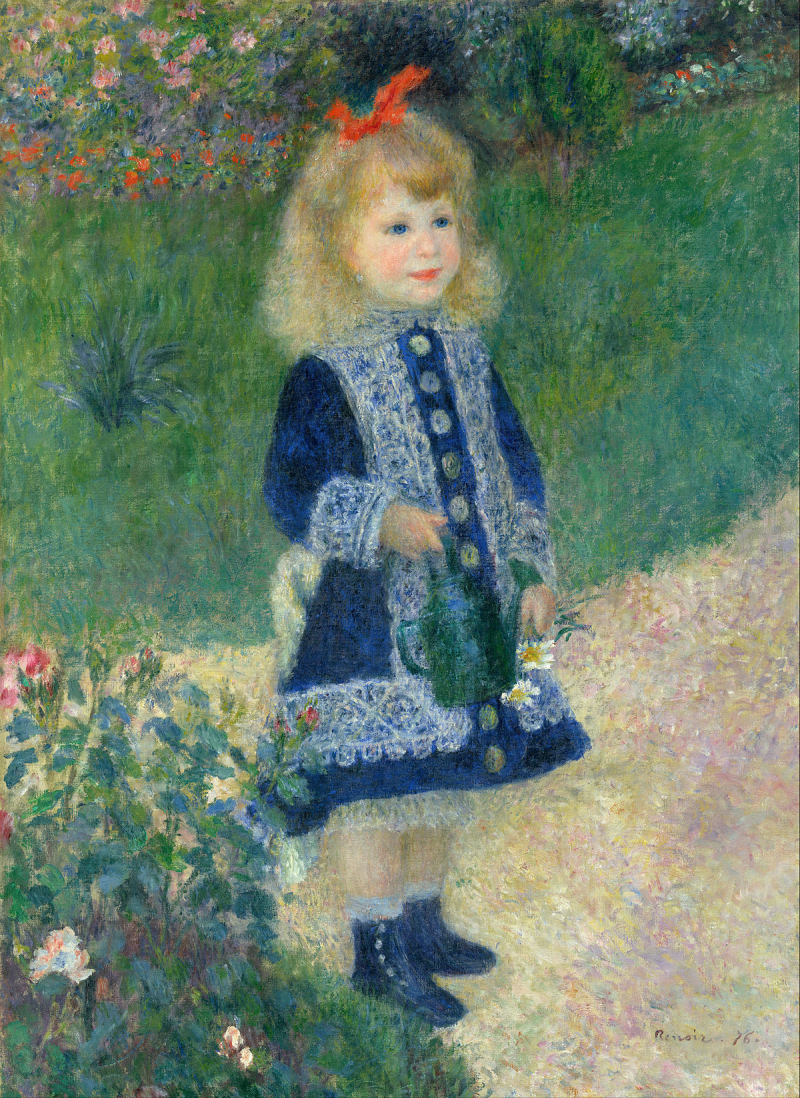
A Girl with a Watering Can - Wikipedia 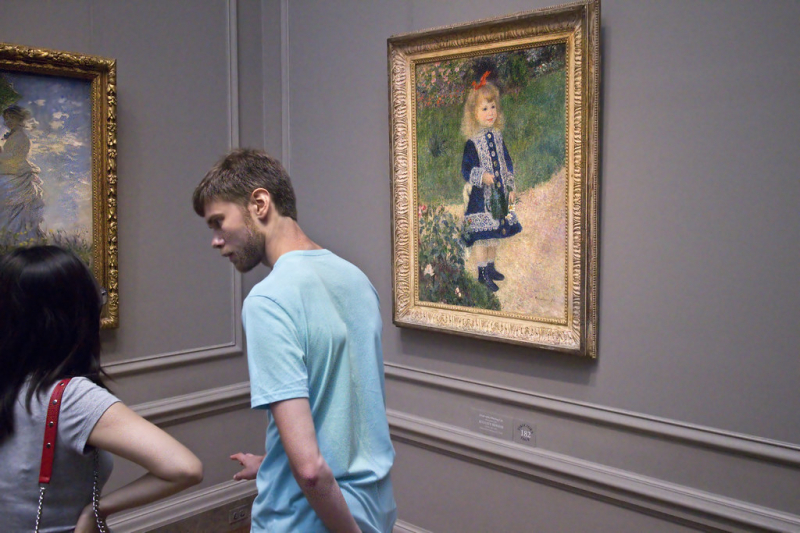
Flickr -
Madame Charpentier was a powerful woman who was fascinated by the Impressionists, notably Renoir. The artists painted various portraits for the Charpentiers, the most well-known of which is this one. It features Madame Charpentier, her daughter Georgette-Berthe, and her son Paul-Émile-Charles.
The portrait was shown prominently in the Salon in 1879 and was highly received by most. It was a watershed moment in Renoir's career, as it led to other commissions and financial success. Madame Georges Charpentier and Her Children is still regarded as one of Renoir's best portraits.
Year: 1878
French Title: Madame Charpentier et ses Enfants
Location: Metropolitan Museum of Art, New York City, USA
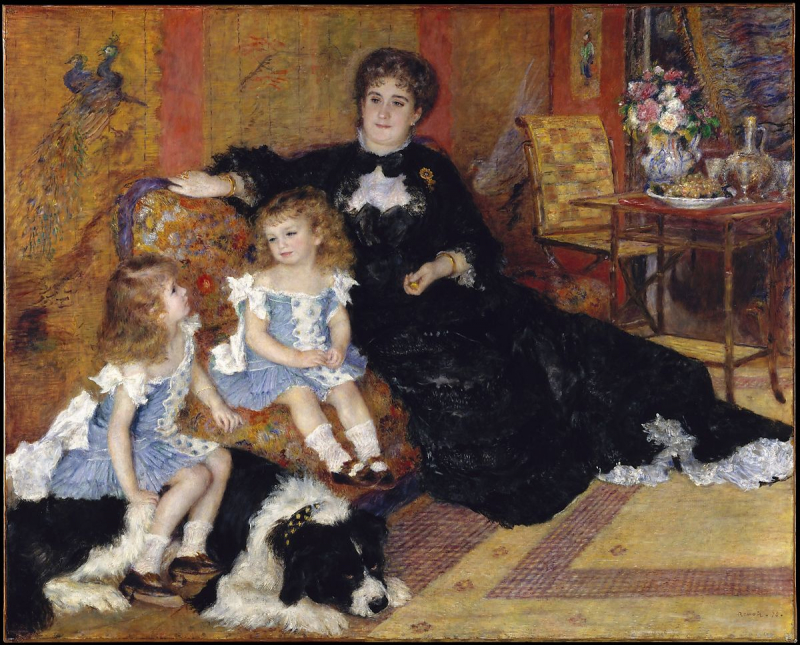
The Metropolitan Museum of Art 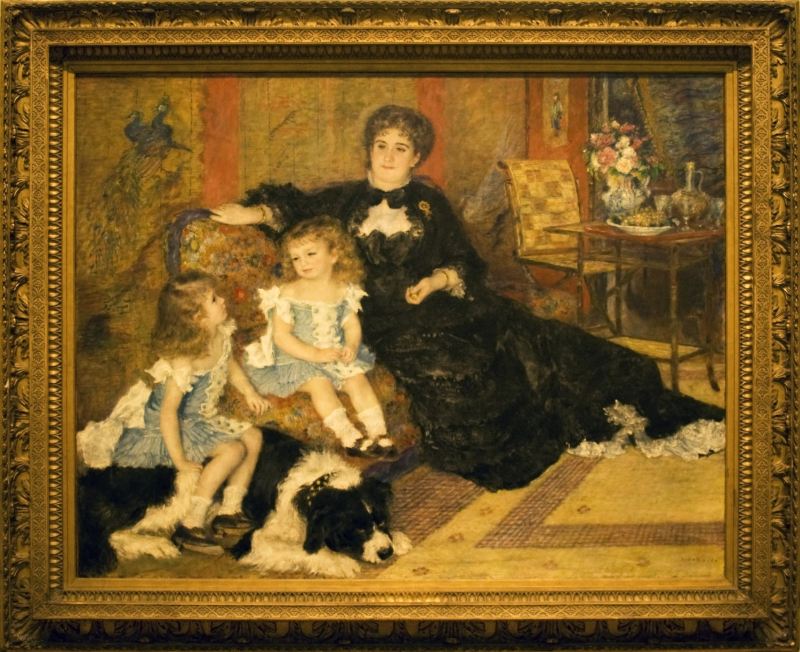
Wikimedia Commons -
One of the wealthiest Jewish banking families in Paris was the Cahen d'Anvers family. Irene, the oldest daughter, was 8 years old when Louis Cahen d'Anvers commissioned Renoir to paint portraits of his three daughters. In a distinct artwork that is now known as Pink and Blue, the other two daughters are depicted.
When the project was finished, Louis hung it in his servant's quarters since he was so dissatisfied with it. The Nazis stole the artwork during World War II, and it was displayed in Paris in 1946 as one of the "French masterpieces rediscovered in Germany." The picture, also known as The Little Girl with the Blue Ribbon, is now thought to be one of Pierre-Auguste Renoir's best-executed pieces.
Year: 1880
French Title: Portrait de Mademoiselle Irene Cahen d’Anvers
Location: Foundation E. G. Bührle, Zürich, Switzerland
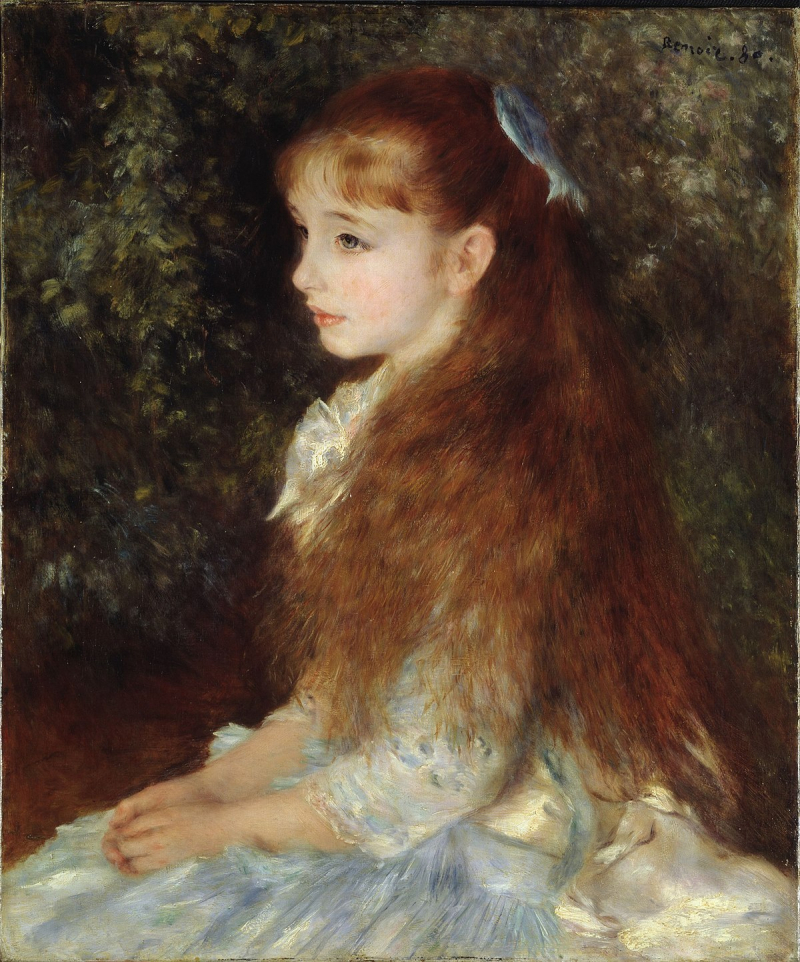
Portrait of Irène Cahen d'Anvers - Wikipedia 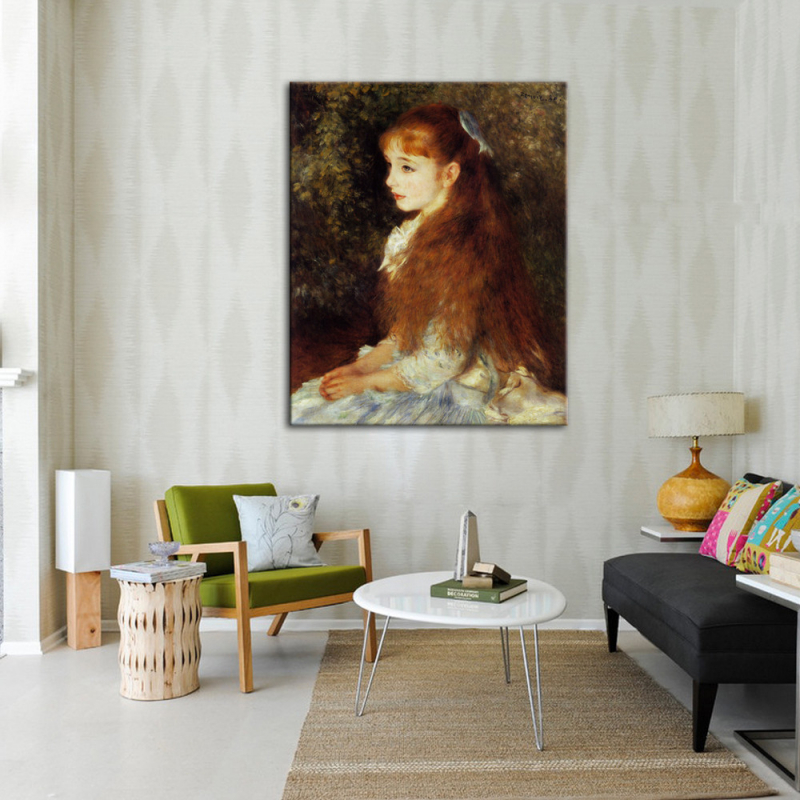
AliExpress -
Renoir's journey to Italy in 1881–1882 provided him with inspiration from Renaissance painting. His style underwent a significant transformation as a result and diverged significantly from his earlier Impressionist approach. The meticulously rendered features of the subject's face in this portrait make this very clear. However, the background's loose brushstrokes are evocative of his older Impressionist approach.
Instead of painting outside, he did it in his studio. To create the beach scene, Renoir drew inspiration from his study of the Normandy coast. Aline Charigot, who was Renoir's girlfriend at the time, is the subject of the picture. Later, the two got married, and they had three kids together.
Year: 1883
French Title: Au Bord de La Mer
Location: Metropolitan Museum of Art, New York City, USA
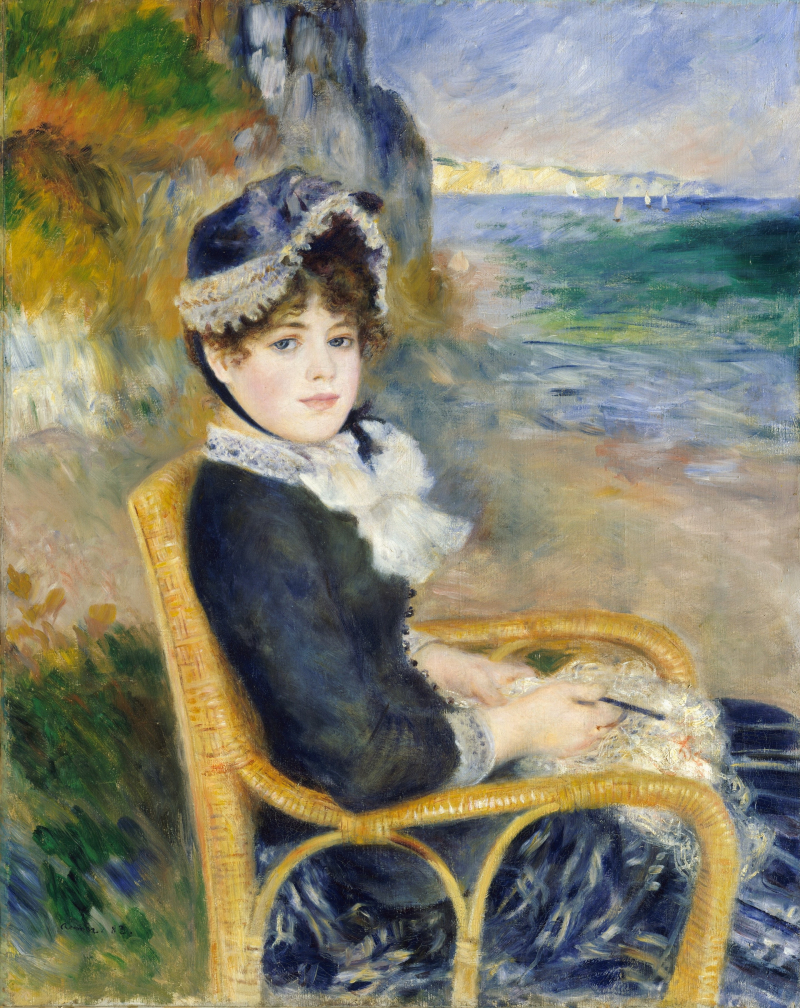
art-Renoir.com 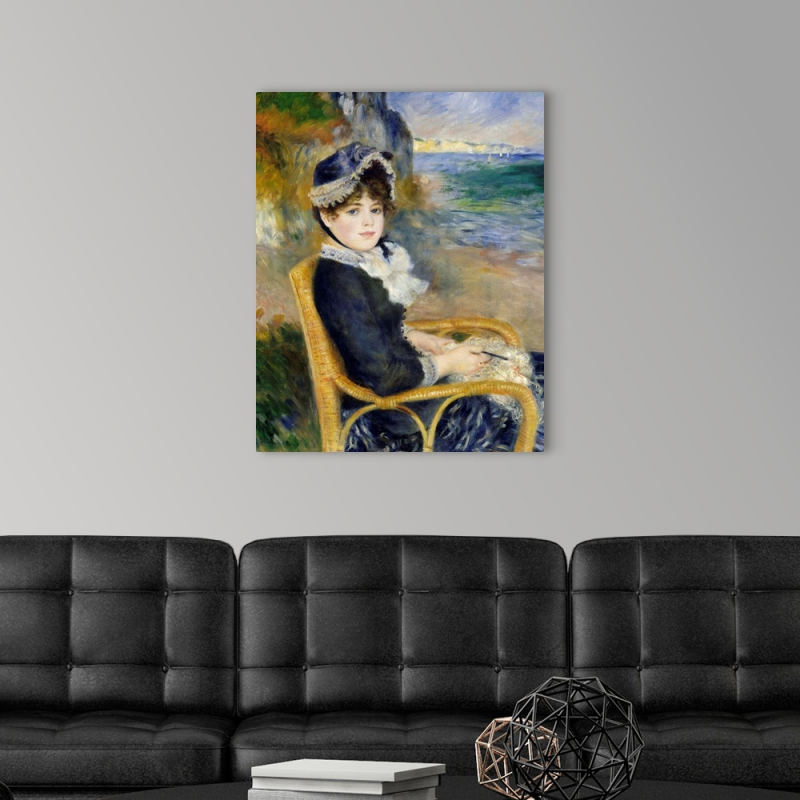
Great Big Canvas -
Businessman Ambroise Vollard was a prominent art trader in the early 20th century. In the latter years of his career, he supported Renoir's art and was a friend of the artist. Renoir painted multiple portraits of Vollard wearing various disguises as a way to honor their relationship. Renoir shows him in this painting inspecting a sculpture of a naked woman from antiquity, demonstrating his appreciation for both beauty and art.
The painting displays Renoir's development as a portrait painter who tried out several aesthetics over the course of his career. In the later years of his career, Portrait of Ambroise Vollard ranks among his best pieces.Year: 1908
French Title: Portrait d’Ambroise Vollard
Location: The Courtauld Gallery, London, England
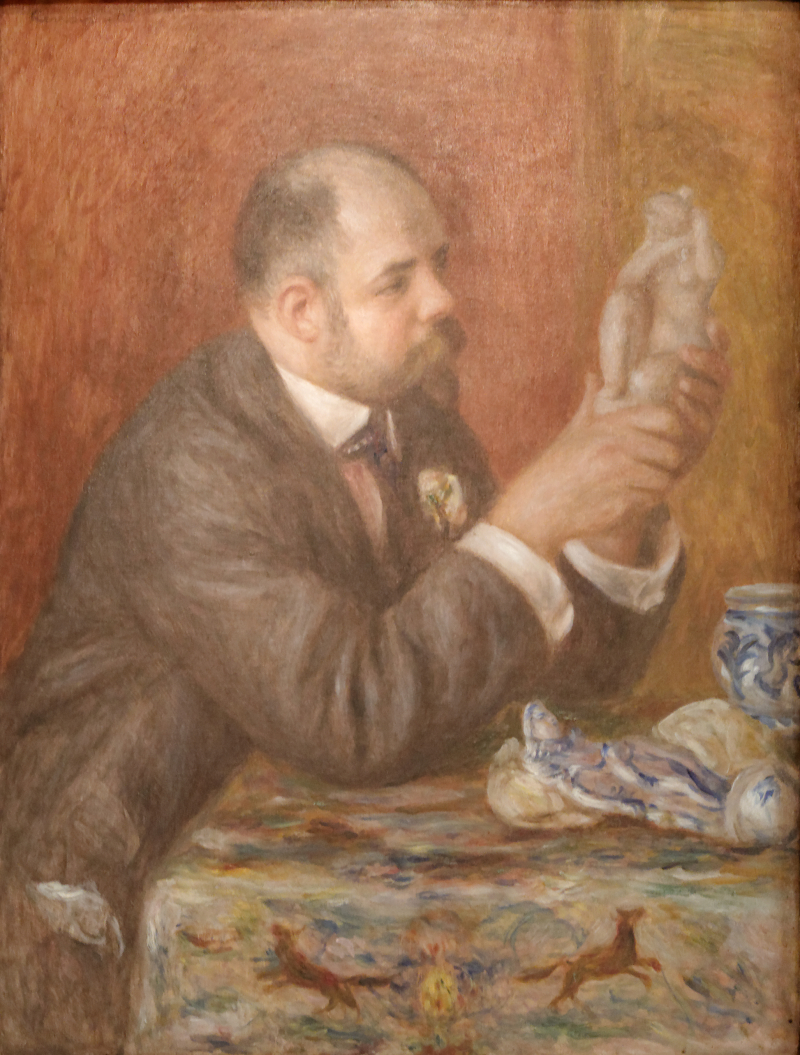
Wikimedia Commons 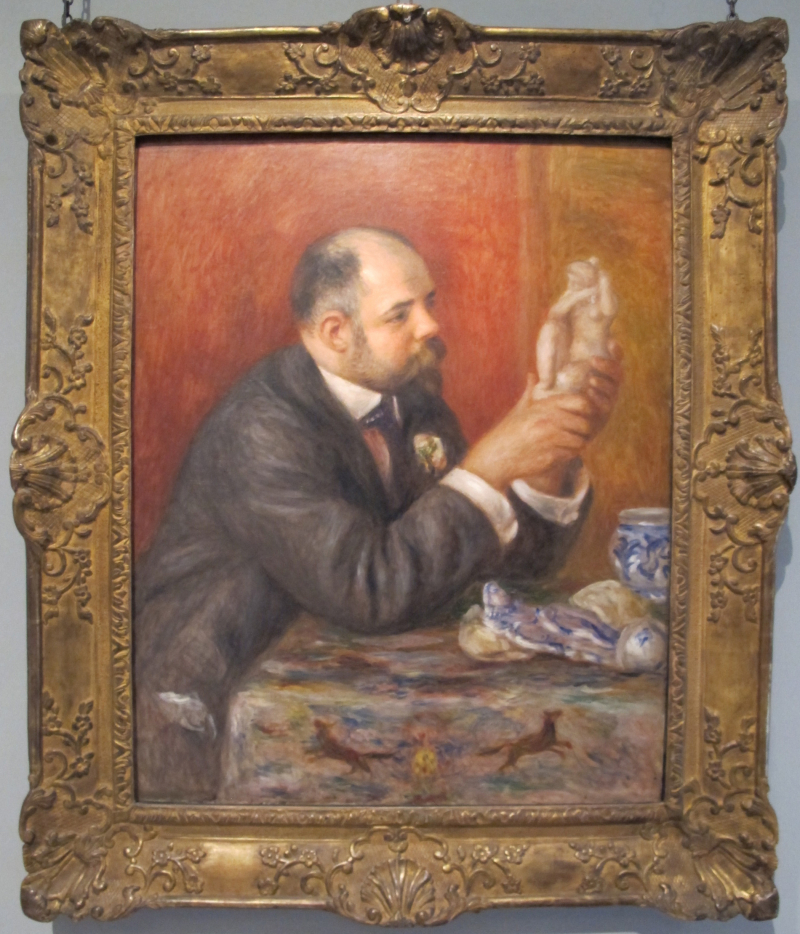
Wikimedia Commons









